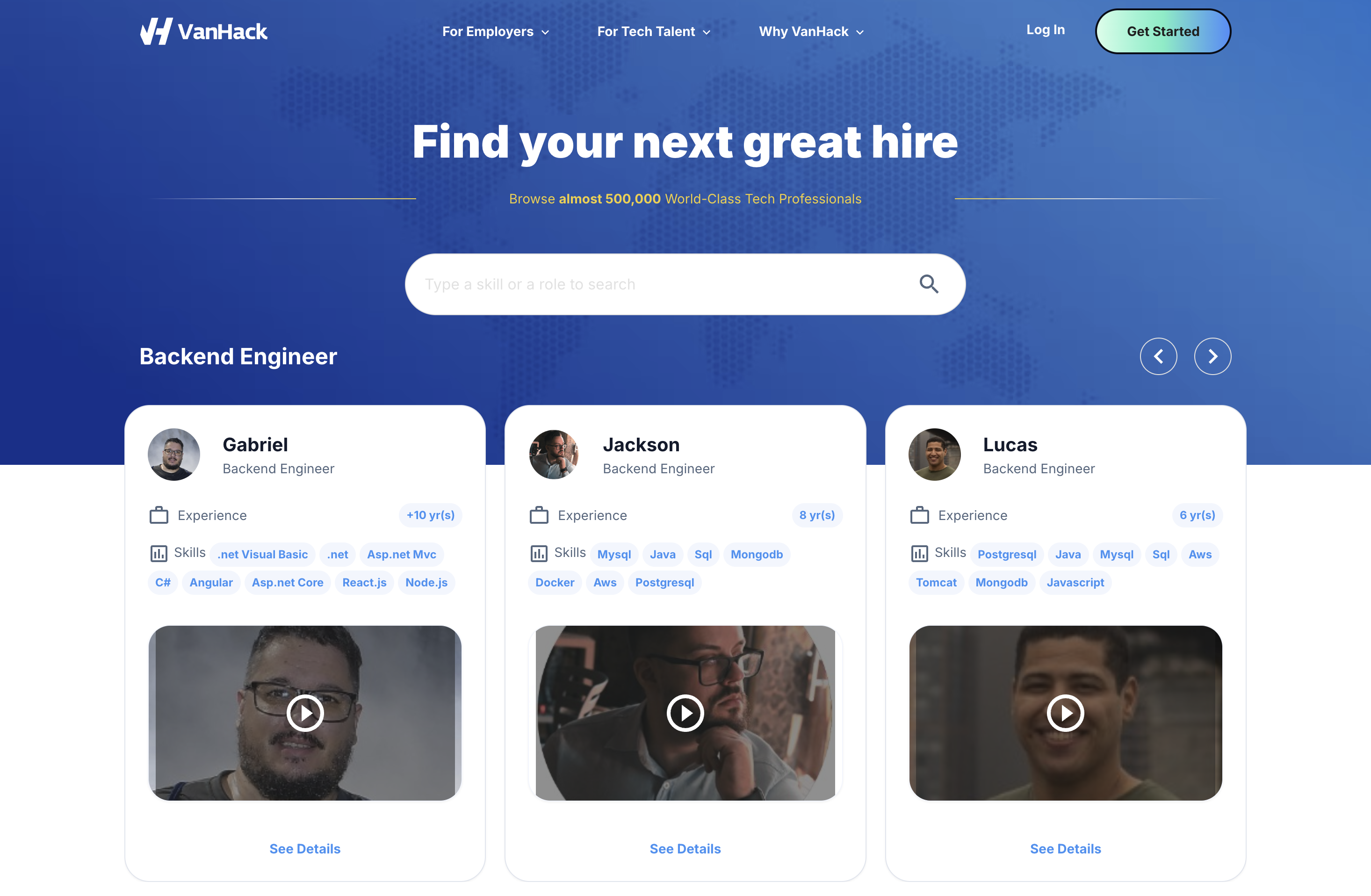Finding skilled engineers is a vital challenge for US startups aiming to grow in 2025. This guide offers a clear roadmap for tapping into the remote Latin American developer market. You’ll learn key terms, best practices for technical vetting and team integration, and how to align talent with your business goals. It also breaks down the choice between building your own recruiting system or partnering with experts, helping you make smart hiring decisions.
Why Hire Remote Latin American Developers?
Meeting the High Demand for Senior Engineers
The need for experienced engineers has never been greater. In the US, software engineers earn an average of $141,205 annually, while developers make $111,845, with 45% working remotely as reported by Stack Overflow’s 2025 Developer Survey. This rise in remote work has opened up global talent options, but it’s also made local hiring more competitive.
For startups at Series A to C stages, competing with big tech companies for local senior talent often strains budgets. Limited candidates drive up costs, leaving smaller firms with tough choices: settle for less experience or burn through funds. That’s why many leaders now see international hiring as a smart, strategic move.
Remote work removes location barriers, giving companies access to a wider pool of skilled developers. While others stick to local searches, you can gain an edge by going global. Partner with platforms that connect you to this talent pool and start building your team now.
Gaining Cost Savings and Quality Talent
Hiring developers from Latin America offers clear financial benefits. Annual salaries in the region range from $30,000 to $60,000, depending on location and experience, saving you about 75% compared to US rates. This isn’t just about lower costs, but accessing capable talent at a better value.
Many Latin American developers match US peers in technical skills. They often have experience with US firms, understand business norms, and share similar time zones. Countries like Brazil, Argentina, and Colombia produce well-trained engineers skilled in modern tools, agile workflows, and large-scale systems.
On top of salary savings, you cut expenses on office space and extensive benefits. Remote hiring also avoids the high turnover costs seen in local markets. This combination stretches your budget further while keeping or boosting your team’s output.
Understanding 2025 Salary Benchmarks in Latin America
Salaries for developers vary across Latin America, and knowing these differences helps you stay competitive. Panama has the highest average at $43,160 for software developers, followed by Costa Rica at $39,800 and Uruguay at $37,950.
For senior roles, pay reflects similar trends. Costa Rica tops the list for senior developers at $52,500, with Panama at $49,600 and Uruguay at $47,800, marking them as key high-end markets.
Colombia stands out as a strong option for US firms. Remote software developers there average $59,393 annually. This positions Colombia as a cost-effective yet skilled market compared to US salaries.
Experience levels play a big role in pay. Junior remote developers earn between $10,000 and $15,000 yearly, while senior ones range from $40,000 to $60,000. This spread lets you build balanced teams within budget.
Specialized skills increase pay rates. High-demand fields like AI, cybersecurity, data science, and DevOps often push salaries higher in Latin America. Even with these premiums, costs remain much lower than in the US.
How to Successfully Hire Remote Developers from Latin America
Clarify Your Needs: Roles, Skills, and Goals
Effective remote hiring starts with a clear picture of what you need. Developer roles range from juniors handling specific tasks to principal engineers shaping systems and guiding teams. For remote hires from Latin America, define expectations for independence, teamwork, and communication upfront.
Match hires to your product plans and funding stages. Early startups often need versatile developers who adapt across tasks, while mature firms might seek experts in niche areas. Decide if you need senior talent for quick results or if you can invest time in growing junior hires.
Set success standards beyond coding. Remote staff need guidelines on how often to communicate, document work, and join team activities. Factor in time zones, language skills, and cultural fit alongside technical ability. Work with experts who grasp these details to find the right people.
Conduct Thorough Technical Evaluations
Assessing remote Latin American developers means testing both their coding skills and how well they communicate. Standard whiteboard tests often miss real-world problem-solving and teamwork abilities crucial for remote roles. Use practical evaluations that mirror actual job demands instead.
Design coding tasks based on your tech stack and project needs. Offer take-home assignments to see how candidates handle design, code quality, and documentation. These show their thought process and care for detail in ways interviews can’t.
Check communication skills too. Remote developers must explain ideas clearly, ask good questions, and update progress regularly. Use video calls with technical discussions or problem-solving tasks to gauge how they’ll collaborate from afar.
Keep evaluations fair with set criteria. Rate candidates on technical knowledge, clarity in communication, problem-solving methods, and cultural fit. Record why decisions are made to refine future hiring and ensure consistency.
Build a Unified Remote Team Culture
Creating a strong remote team across regions and time zones takes careful planning and follow-through. Good remote teams set clear ways to communicate, share routines, and ensure everyone feels included.
Set rules for communication that respect time zone gaps while keeping the team connected. Define key hours for collaboration, expected reply times, and how to handle urgent issues. Use tools for non-real-time updates, but keep space for live discussions when necessary.
Make team practices welcoming so remote members don’t feel left out. Involve them in planning, code reviews, and casual chats. Adjust meeting times fairly across the team. Share written notes on decisions to give everyone equal insight.
Go beyond work processes for cultural fit. Share the reasoning behind business choices, value different viewpoints, and encourage casual team bonding. A solid culture cuts turnover, boosts work quality, and helps keep talent long-term.
Decide: Build or Partner for Talent Acquisition
Choosing between setting up your own recruiting or working with a specialist depends on your size, timeline, and needs. Small startups may not hire enough to need a full recruiting team, while growing firms might want control over the process.
Internal recruiting offers deep insight into your company’s culture but demands investment in tools, training, and market knowledge. Navigating international hiring also requires understanding local laws and customs, which takes time to learn.
Partners like VanHack give you quick access to screened talent, proven vetting methods, and regional know-how. This cuts down hiring time, raises candidate quality, and skips the initial hurdles of global markets. For fast growth, partnering often delivers better value.
A mixed approach can work too. Keep control over final hiring choices while using external help for sourcing and logistics. This balances oversight with the efficiency and experience internal teams may lack at first.
VanHack: Your Trusted Partner for Hiring Latin American Talent
Navigating the global talent market is easier with the right support. VanHack connects US companies to skilled Latin American developers through a streamlined, tech-driven process.

VanHack’s AI-Driven Vetting: Accurate Insights, Quicker Results
VanHack stands out with a detailed, AI-supported vetting system that evaluates candidates before you meet them. This cuts through the clutter of typical recruiting and provides solid data for better choices.
Short video introductions, lasting 1-2 minutes, let you quickly judge communication skills and English fluency. Hiring managers see personality and clarity without needing early phone screens, saving valuable time.
Coding tests, linked with trusted platforms like Woven, confirm technical skills with hard numbers. You don’t just see claimed abilities; you get scores showing how candidates stack up against industry standards.
AI technical interviews, conducted by a virtual interviewer named “Anna,” dive into problem-solving and technical discussion over 30 minutes. Full recordings, transcripts, and scores per question give a clear view without tying up your senior staff for early rounds.
This process delivers a focused list of 3-5 qualified candidates, skipping the flood of untested resumes. Speed up hiring by using platforms built for this purpose and avoid the slog of standard screening.
Full Support for Hiring and Onboarding
VanHack goes beyond basic recruiting to cover every step of global hiring. Their services tackle the challenges of bringing international talent on board.
The “All-You-Can-Hire” subscription, priced at $3,000 monthly, allows unlimited hires via their AI recruiter, “Vanna.” This fixed cost beats per-hire agency fees, making growth more affordable.
Global mobility and relocation support comes through VanHack’s dedicated team. They manage visa processing with expert consultants, worth around $5,000, plus help with housing, schools, and community connection via local WhatsApp groups. This eases the administrative load for you and your hires.
The direct hire model ensures candidates join as your full employees, simplifying management compared to contractor setups or outsourcing.
VanHack Compared to Traditional Hiring: Better Value for Growth
|
Feature |
VanHack (Vanna Subscription) |
Traditional Agency (Per Hire) |
Do-It-Yourself (Job Boards) |
|
Cost Model |
Flat Monthly Fee |
Percent of Annual Salary Per Hire |
Time and Internal Resources |
|
Candidate Vetting |
AI-Powered, Pre-Screened, Detailed Profiles |
Inconsistent, Often Minimal Checks |
Internal Screening Required |
|
Time-to-Hire |
Quick (Shortlist of 3-5 Candidates) |
Average (Heavy Sourcing Effort) |
Slow (High Volume, Low Fit) |
|
Relocation Support |
Full Immigration and Mobility Help |
None, Your Responsibility |
None, Your Responsibility |
The cost difference shines when hiring multiple roles. Traditional agencies, charging 20-30% of a hire’s yearly salary, rack up fees fast. Hiring seven developers with VanHack’s subscription costs $9,000, while agency fees could top $100,000, impacting your budget and growth plans significantly.
Scale your team efficiently. Connect with remote Latin American developers through a specialized platform at VanHack today.
Getting Your Company Ready for Remote Latin American Talent
Evaluate Your Readiness for Global Hiring
Hiring remotely on a global scale takes more than standard recruiting skills. Review your processes, tools, and management approach to spot areas that could hinder success with remote teams.
Check if your hiring steps suit remote candidates. In-person interviews, paper forms, and local onboarding won’t work for international hires. Plan for time zone coordination, digital tools, and virtual onboarding setups.
Look at your managers’ skills for leading remote staff. They need to handle non-real-time communication, measure performance fairly, and respect cultural differences. If experience is lacking, provide training to close gaps.
Ensure your tech supports remote work. Reliable video calls, project tracking tools, and secure system access are musts. Also, verify compliance for international hires and data security across borders.
Steer Clear of Common Hiring Mistakes
International hiring can be complex, and missteps can hurt your reputation in global markets. Avoid frequent errors to protect your brand and improve outcomes.
Being upfront about pay ranges builds trust quickly when offering remote roles to Latin American developers. Clear salary details draw serious candidates and save time on mismatched expectations.
Don’t let cultural biases affect integration. Treat remote Latin American developers as equal team members, not just cost-saving options. Offer them growth paths, include them in key talks, and highlight their work.
Skipping detailed vetting often leads to bad hires and costly turnover. General job boards and basic checks miss the specific skills needed for remote roles. Team up with specialists who know technical and cultural needs. Connect with top talent through tested methods at VanHack to lower hiring risks.
Common Questions About Hiring Remote Latin American Developers
What Do Senior Remote Developers in Latin America Typically Earn?
Senior remote developers from Latin America usually earn between $40,000 and $60,000 yearly, varying by country, experience, and skills. This offers about 75% savings compared to US software engineers averaging $141,205. For instance, senior developers in Costa Rica average $52,500, while in Colombia, they earn around $59,393. US firms often pay above local rates but still save significantly over domestic hires.
How Does VanHack Guarantee Candidate Quality?
VanHack uses a thorough vetting system blending AI tools and human review to ensure only strong candidates make the cut. This includes video intros to check communication and English skills, coding tests via trusted platforms for measurable skill proof, and 30-minute AI technical interviews with “Anna,” yielding recordings, transcripts, and scores. Only 3-5 top candidates reach you, cutting screening time while prioritizing quality.
What Relocation Support Does VanHack Provide?
VanHack offers mobility services through a dedicated team, managing immigration and relocation. This covers visa processing by experts, valued at about $5,000, plus help with housing, schools, and community ties via local WhatsApp groups. Support continues from remote work during visa waits through to settling in, easing legal and social hurdles for hires.
How Does VanHack’s Subscription Stack Up Against Traditional Fees?
VanHack’s “Vanna” AI recruiter offers unlimited hires for a flat $3,000 monthly fee, unlike agencies charging 20-30% of annual salary per hire. Hiring seven developers via VanHack costs $9,000, while agency fees could exceed $100,000. This predictable pricing supports growth without the steep costs of per-hire models.
What Time Zone Benefits Do Latin American Developers Bring?
Latin American developers work in time zones just 1-4 hours from US hours, allowing real-time teamwork unlike Asian markets. This closeness supports agile methods, fast issue resolution, and smooth blending with US teams. They can join daily updates, address urgent needs during work hours, and keep the communication flow agile teams need.
Conclusion: Global Talent Is the Future of Engineering Teams
Creating a top engineering team is key to thriving in today’s competitive startup world. Latin America offers skilled developers at sustainable costs, giving you an edge over firms stuck in pricey local markets.
Remote work has widened talent options, but tapping into this requires know-how and support. VanHack simplifies the process with pre-screened candidates, AI vetting tools, and relocation help, addressing global hiring challenges.
Savings go beyond pay, cutting office costs, improving retention, and accessing rare skills. Latin American developers also bring technical strength, cultural alignment, and convenient time zones for better operations.
Global hiring success needs careful planning, cultural awareness, and the right partner. Collaborating with platforms like VanHack helps you build strong teams while dodging common issues.
Ready to grow your engineering team smartly? Start connecting with talented remote Latin American developers at VanHack now.



